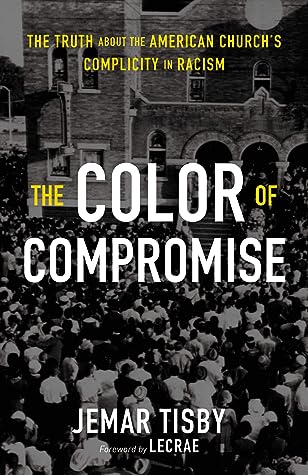More on this book
Community
Kindle Notes & Highlights
by
Jemar Tisby
Started reading
July 1, 2020
We live in a country centered around whiteness that disregards how the image of God is on magnificent display in nonwhite bodies (and histories and theologies, etc.). If we don’t take responsibility for what has happened in America, we’re not willing to see the image of God throughout the world.
Although many people from Birmingham and beyond expressed outrage at the murder of these four black girls at church, Morgan’s point stands out—the most egregious acts of racism, like a church bombing, occur within a context of compromise. The failure of many Christians in the South and across the nation to decisively oppose the racism in their families, communities, and even in their own churches provided fertile soil for the seeds of hatred to grow. The refusal to act in the midst of injustice is itself an act of injustice. Indifference to oppression perpetuates oppression.
History and Scripture teaches us that there can be no reconciliation without repentance. There can be no repentance without confession. And there can be no confession without truth.
But Martin Luther King Jr. gave an important rationale for shining a light on injustice, despite the pain it may provoke. “Like a boil that can never be cured so long as it is covered up but must be opened with all its ugliness to the natural medicines of air and light,” he wrote, “injustice must be exposed, with all the tension its exposure creates, to the light of human conscience and the air of national opinion before it can be cured.”9 King’s words apply to racism in the church. The festering wound of racism in the American church must be exposed to the oxygen of truth in order to be
...more
White complicity with racism isn’t a matter of melanin, it’s a matter of power. Other nations have different dynamics. Whether society is stratified according to class, gender, religion, or tribe, communities tend to put power in the hands of a few to the detriment of many. In the United States, power runs along color lines, and white people have the most influence. Historically speaking, when faced with the choice between racism and equality, the American church has tended to practice a complicit Christianity rather than a courageous Christianity. They chose comfort over constructive conflict
...more
One notable theme is that white supremacy in the nation and the church was not inevitable. Things could have been different. At several points in American history—the colonial era, Reconstruction, the demise of Jim Crow—Christians could have confronted racism instead of compromising. Although the missed opportunities are heartbreaking, the fact that people can choose is also empowering. Christians deliberately chose complicity with racism in the past, but the choice to confront racism remains a possibility today.
What stands out about these complaints is not their originality or persuasiveness but their ubiquity throughout history. The same arguments that perpetuated racial inequality in decades past get recycled in the present day. Critics will assert that the ideas in The Color of Compromise should be disregarded because they are too “liberal.” They will claim that a Marxist Communist ideology underlies all the talk about racial equality. They will contend that such an extended discussion of racism reduces black people to a state of helplessness and a “victim mentality.” They will try to point to
...more
Although our eternal peace is secure, a diverse but unified body of Christ will only come through struggle in this life. A survey of the history of racism and the church shows that the story is worse than most imagine. Christianity in America has been tied to the fallacy of white supremacy for hundreds of years. European colonists brought with them ideas of white superiority and paternalism toward darker-skinned people. On this sandy foundation, they erected a society and a version of religion that could only survive through the subjugation of people of color. Minor repairs by the
...more
To grasp how American Christians constructed and cooperated with racism, one has to realize that nothing about American racism was inevitable. There was a period, from about 1500 to 1700, when race did not predetermine one’s station and worth in society. This is not to say that racism did not exist; it surely did. But during the initial stages of European settlement in North America, the colonists had not yet cemented skin color as an essential feature of life in their communities. Race was still being made.
Europeans failed to acknowledge the longstanding, well-developed religious beliefs and practices of the people they met. Instead, they viewed indigenous men and women as blank slates on which Christian missionaries could write the gospel. This paternalistic view of evangelism permeates American church history.
As many as one-third of African slaves died within their first three years in the Americas.14
An estimated ten to twelve million slaves were brought across the Atlantic, and the majority ended up in the Caribbean or South America.19
Enslavement was different in South America and the Caribbean than in North America. The labor-intensive crops and enormous plantations meant that Africans usually outnumbered Europeans. The Haitian Revolution broke out in 1791, and its success was due, in part, to the population discrepancy between enslaved Africans and European landowners. The harsh working conditions on sugar plantations and deadly diseases resulted in a high mortality rate. Deaths outnumbered births, so it was more cost-effective for plantation owners to replace slaves rather than to invest in keeping them alive. This led
...more
So from the beginning of American colonization, Europeans crafted a Christianity that would allow them to spread the faith without confronting the exploitative economic system of slavery and the emerging social inequality based on color.
Whitefield was more moderate on race than many of his white contemporaries. He excoriated enslavers for their physical abuse of slaves, calling them “monsters of barbarity.”


